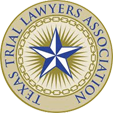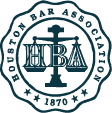Houston’s bustling economy owes much to its extensive rail network, a vital conduit for goods and passengers alike. Yet, the very trains that bolster commerce and connectivity can also pose significant risks. Railroad accidents, whether due to equipment malfunctions, derailments, or toxic substance exposure, can have devastating consequences. For those who have suffered injury or loss in such incidents, understanding their legal rights and the path to compensation is paramount. This is where the expertise of a Houston Railroad Accident Attorney becomes indispensable.
Understanding Railroad Accidents in Houston
Railroad accidents can emerge from a myriad of causes, many rooted in negligence or oversight. Equipment failure, for instance, can lead to catastrophic derailments, while exposure to hazardous chemicals — a subject Adley Law Firm has considerable experience with — can result in long-term health complications. Moreover, human error, such as misaligned track switches or improperly controlled rail cars, can precipitate serious collisions. Understanding these causes is the first step in addressing the aftermath of a railroad accident.
Legal Rights and Protections for Railroad Accident Victims
Victims of railroad accidents have specific legal protections. For railroad workers injured on the job, the Federal Employers Liability Act (FELA) provides a pathway to sue employers for injuries sustained. This is crucial, as workers’ compensation does not typically cover these employees. Passengers and non-workers, on the other hand, may seek compensation through different legal avenues, often predicated on proving negligence on the part of the railroad company or its employees.
In Texas, the law stipulates a two-year statute of limitations for filing compensation claims after a railroad accident, making it critical for victims to act promptly. Delaying legal action can jeopardize one’s ability to recover damages for their injuries and losses.
Types of Railroad Accident Cases
Railroad accidents affect more than just the employees; they can also result in severe injuries to passengers and even bystanders. Each type of victim — from the railroad worker to the pedestrian at a crossing — faces unique challenges and requires tailored legal strategies. A Houston Railroad Accident Attorney is well-versed in the nuances of each case type, ensuring that every client receives the focused attention their case demands.
Common Causes of Railroad Accidents
The complexities of railroad operations mean that accidents can be triggered by a variety of factors. Poor supervision, human error, and inadequate safety measures often contribute to incidents. Additionally, outdated or poorly maintained tracks and infrastructure can fail, leading to derailments or collisions. Defective warning devices and rail crossing signs further exacerbate the risks for both train passengers and those near the tracks.
Understanding these causes is essential for building a strong legal case. It is not just about securing compensation; it’s about holding the responsible parties accountable and instigating change to prevent future accidents.
The Role of Houston Railroad Accident Attorneys
Navigating the aftermath of a railroad accident requires legal acumen and an intimate knowledge of both state and federal laws. Houston Railroad Accident Attorneys play a pivotal role in this process, offering guidance and representation to those affected by these traumatic events. From conducting thorough investigations to negotiating with railroad companies, these attorneys are committed to securing the best possible outcomes for their clients.
Victims of railroad accidents are often entitled to compensation for various damages, including medical expenses, lost wages, and pain and suffering. However, obtaining fair compensation can be a complex and contentious process, with railroad companies frequently deploying tactics to minimize their liability. An experienced attorney can counter these strategies, ensuring that victims’ rights are protected.
Seeking Compensation for Railroad Accidents
The compensation sought after a railroad accident can cover a broad spectrum of damages. Medical costs can be astronomical, especially for severe or long-term injuries. Loss of income, both current and future, can destabilize a victim’s financial security. Furthermore, the intangible impact of pain and suffering must be acknowledged and quantified to the extent possible within a legal claim.
To build a compelling case, meticulous documentation of all damages and expenses is essential. Houston Railroad Accident Attorneys are adept at gathering and presenting the necessary evidence to support their clients’ claims. This attention to detail is particularly important in class action lawsuits, where the experiences and losses of many individuals converge into a single, powerful legal action.
Why Choose a Houston Railroad Accident Attorney
When facing the aftermath of a railroad accident, choosing an attorney with specialized knowledge and experience in this niche is crucial. Houston Railroad Accident Attorneys bring a deep understanding of the complexities involved in railroad cases, including the intricate regulations and industry standards. Their expertise allows them to craft strategies that effectively address the unique aspects of each case.
Moreover, firms like Adley Law Firm are committed to their clients, offering services on a contingency basis as detailed on their fees page. This “No Fee Promise” ensures that victims can pursue their claims without the burden of upfront legal costs, paying attorney fees only if they win their case.
Case Studies and Testimonials
A testament to the efficacy of a law firm is often found in its track record. Houston Railroad Accident Attorneys have a history of securing substantial settlements and verdicts for their clients. These case studies serve as a beacon of hope for new clients, demonstrating the potential outcomes when professional legal representation is enlisted.
Client testimonials further paint a picture of the attorney-client relationship and the level of service provided. Positive experiences shared by previous clients underscore the dedication and compassion with which these attorneys approach each case.
Preventing Future Railroad Accidents
While compensation is a critical aspect of a railroad accident claim, the broader goal often includes advocating for enhanced safety measures. Effective legal action can lead to changes in industry practices, such as the implementation of better warning systems and the adoption of advanced technology, ultimately reducing the likelihood of future accidents.
Houston Railroad Accident Attorneys not only fight for their clients’ present needs but also work towards a safer future for all who interact with the railroad system, whether as workers, passengers, or bystanders.
Conclusion
If you or a loved one has been involved in a railroad accident in Houston, it is essential to seek the guidance of a knowledgeable attorney. The complexities of such cases require a specialized approach, and time is of the essence due to the statute of limitations. By partnering with a Houston Railroad Accident Attorney, you can pursue the compensation you deserve while contributing to the improvement of railroad safety for everyone.
For more information or to schedule a consultation, visit Adley Law Firm, where you will find a team of dedicated professionals ready to assist you on your road to recovery and justice.






